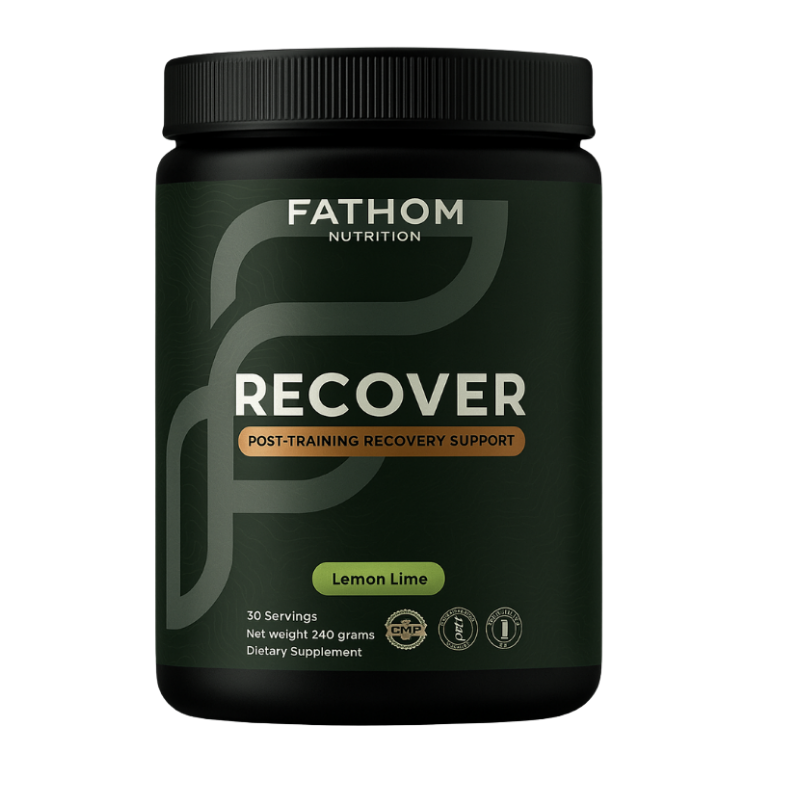A Hybrid Training Schedule for Runners: How to Build Strength Without Losing Your Edge

In recent years, the endurance world has begun to evolve. Distance runners—once loyal to long slow miles and split tempos—are beginning to recognize something that strength athletes have known for years. The body responds best to stress when it’s multidimensional. That realization has created a rising class of hybrid athletes. People who can run well and lift well. Who care about VO2 max and deadlift max. Who want to be more than just fast—they want to be durable.
But hybrid training for runners is not as simple as tacking a few barbell lifts onto your weekly mileage. The sequencing matters. The intent matters. The physiology matters. You are training across systems with competing demands, and unless you get that architecture right, you’ll end up slower, stiffer, or injured.
This post outlines a hybrid training schedule for runners that works. It builds power and resilience without sacrificing aerobic development. And most importantly, it respects the complex biology that underpins adaptation. Whether you’re a sub-three-hour marathoner or a recreational 10k runner looking to future-proof your body, this is the starting point.
Let’s talk about how to lift without breaking your stride.
What Is Hybrid Training for Runners?
The short answer is this: hybrid training combines endurance and resistance training within the same program. For runners, that means you are doing structured running—thresholds, long runs, intervals—alongside progressive strength work designed to improve tissue capacity, power output, and neuromuscular coordination.
The goal is not to become a powerlifter. It’s to develop a stronger, more injury-resistant system that performs better under aerobic stress.
Strength training, done correctly, increases stride efficiency, improves running economy, delays neuromuscular fatigue, and reduces ground contact time. It also improves hormonal signaling, bone density, and soft tissue durability—critical as training volume increases or age creeps up.
So why don’t more runners do it?
The Old Model: Too Much Interference, Not Enough Recovery
Most runners avoid strength training for one of two reasons: they’ve done it wrong before and felt worse, or they’re worried about gaining “bulk” and losing speed.
That fear isn’t totally unfounded. When strength work is introduced poorly—too much volume, poor movement patterns, or scheduled too close to key run sessions—it can interfere with recovery and performance.
This is the “interference effect” you may have heard about. It refers to the competing adaptations of endurance and resistance training. Endurance work promotes mitochondrial development, capillary growth, and increased oxidative enzymes. Strength work stimulates muscle fiber recruitment, tendon remodeling, and neuromuscular firing patterns. These processes don’t always play nicely together if they’re layered haphazardly.
The solution is not to train less. The solution is to train smarter.
Structuring a Hybrid Week Around Your Running
The right hybrid training schedule prioritizes the goal. And for you, the goal is running. So everything else—including strength training—is built around that.
The best model for most runners is a 5 to 6 day schedule that includes 3 to 4 run sessions and 2 to 3 strength sessions. The key is in the sequencing.
Here is a template that respects adaptation curves, joint fatigue, and central nervous system recovery:
Monday – Easy Run + Strength (Lower Body)
An aerobic recovery run followed by lower-body strength work. Think trap bar deadlifts, split squats, step-ups, and loaded carries. Keep the volume low to moderate. This is not a bodybuilding session. It’s a neuromuscular training session.
Tuesday – Tempo or Threshold Run
This is your key endurance development session. Lactate threshold or steady-state efforts. No strength work here. Let the run do its job.
Wednesday – Rest or Mobility
Full recovery day or optional mobility session. Think hip work, breathing, foam rolling, and sleep. This is where the adaptation happens.
Thursday – Easy Run + Strength (Upper Body + Core)
Easy aerobic run in the morning or afternoon. Later, a short strength session focused on upper body pressing and pulling, plus trunk stability. Pull-ups, push-ups, kettlebell presses, and weighted planks are ideal. Avoid lower-body lifts here.
Friday – Intervals or Hill Repeats
This is your second key run of the week. Intervals at VO2 max pace or hill repeats. It’s neurologically demanding, so give it breathing room on either side.
Saturday – Long Run
Keep this aerobic. Stay in Zone 2. This is your endurance anchor. Run slow to run fast.
Sunday – Off or Optional Zone 2 Cross-Training
Ride a bike. Go for a hike. Row at an easy pace. Or do nothing. Your choice—but always check your HRV, sleep, and mood before loading this day.
This structure does three important things. First, it protects your quality run days. Second, it spaces out your strength training to avoid lower-body interference. Third, it gives your system enough recovery to keep progressing.
This is not just about avoiding injury. It’s about optimizing performance.
What Kind of Strength Work Should Runners Do?
Not all lifting is created equal. For hybrid runners, strength training should focus on compound movements, movement quality, and force production—not hypertrophy.
Your priority is to get strong, not big.
You want lifts that train multiple joints and muscle groups at once. Exercises that translate to running economy, vertical stiffness, and injury resilience.
The best lifts for runners include:
-
Trap bar deadlift
-
Bulgarian split squat
-
Step-ups with load
-
Rear foot elevated split squat
-
RDLs and single-leg RDLs
-
Sled pushes and carries
-
Pull-ups, push-ups, rows
-
Paloff press, weighted planks, and anti-rotation core work
Avoid high-rep circuits that just mimic cardio. Your goal in the gym is not to sweat. It’s to train motor patterns, generate force, and improve tissue integrity.
Start with two sessions per week. Each should last no more than 45 minutes. Keep the rep ranges between 3 and 6 per set. Use 3 to 5 sets per movement. Rest 2 to 3 minutes between sets. Train with intention, not fatigue.
What About Zone 2?
If you follow people like Inigo San Millán, Peter Attia, or even elite coaches in triathlon and marathon communities, you’ll notice one thing they all emphasize: Zone 2.
For runners, this is where most of your aerobic base should be built. It’s the pace you can sustain while breathing through your nose, holding a conversation. It’s also the place where your mitochondria become more efficient and your fat oxidation improves.
The mistake most hybrid athletes make is skipping over Zone 2 in favor of sexy high-intensity work. That’s a fast track to overreaching and stagnation.
Make sure two to three of your weekly runs are in Zone 2. The long run especially. These are the sessions that improve your capacity to do more work over time—without breaking down.
How to Progress Without Overtraining
The biggest trap in hybrid training is overdoing it. Not in one session, but over weeks. The data often shows it first. Resting heart rate climbs. HRV trends downward. Sleep worsens. Mood declines. Lifts feel heavy. Runs feel sluggish.
That’s not a failure of motivation. It’s a failure of planning.
The way you prevent this is through progressive overload—not linear overload. You can’t keep adding more weight or more miles every week. Periodization matters.
Try the three-week build, one-week deload model. Train progressively for three weeks, then back off intensity and volume in week four. This gives the nervous system time to adapt. Then repeat.
Also, don’t change too many variables at once. If you’re increasing mileage, hold strength work steady. If you’re adding a third lift per week, drop one of the intervals. You can have anything you want—just not all at once.
Recovery: The Part Most Runners Ignore
Training is just the signal. Recovery is the response.
Get at least seven hours of sleep per night, ideally closer to eight or nine if training volume is high. Prioritize protein—1.6 to 2.2 grams per kilogram of bodyweight per day. Carbs are not optional. They fuel your sessions and refill glycogen. Fat helps regulate hormones and supports immune function.
Use tools like HRV tracking, sleep monitoring, and mood journaling to keep tabs on recovery. If your morning HRV is tanking, don’t white-knuckle through the session. Pivot.
Recovery is not weakness. It’s wisdom.
Final Thoughts
Hybrid training for runners is not a compromise. It’s an upgrade.
When done right, strength training will not make you slow. It will make you resilient. It will improve your efficiency. It will delay fatigue in the back half of your race. It will keep you running longer—not just in the race, but in life.
The schedule I’ve outlined here is a starting point, not a finish line. As you grow, your training should evolve. But never lose the balance. Never chase one adaptation at the cost of all others.
This is about becoming a more complete athlete. A more capable human. Someone who is hard to kill and easy to recover.
Run well. Lift smart. Recover deeply.
You’ll be surprised how far that will take you.











